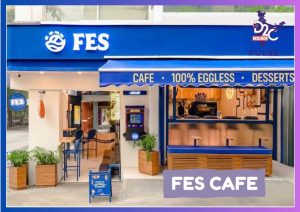Stanley Lifestyles Ltd, the Indian luxury furniture and lifestyle company, announced stable revenue growth and better profits for the quarter and half-year that ended on September 30, 2025.

In the second quarter of fiscal year 2026, the company’s revenue from operations reached Rs 1,054 million, a 2.3% increase from last year. The first half of fiscal year 2026 was successful, with revenue from operations at Rs 2,141 million and after-tax profits up 45.3% to Rs 138 million. These results show that Stanley’s focus on retail growth and disciplined operations is paying off as it invests more in premium direct-to-consumer (D2C) and omnichannel approaches that are changing how India’s direct-to-consumer market works.
Stanley’s gross profit for the second quarter of fiscal year 2026 rose to Rs 614 million, bringing gross margins up to 58.3% from 55.9% the previous year. Earnings before interest, taxes, depreciation, and amortization (EBITDA) greatly improved to Rs 248 million, with margins increasing to 23.5%. The company said that this margin increase was due to good cost management, better operating income from its retail network, and carefully chosen investments in new stores that produce high returns. Lease-related amortization and finance costs went up because of the brand’s ongoing store openings, adding Rs 63 million to expenses for the quarter. But this did not seriously affect the company’s overall profit progress.
Retail remained the main driver of growth. The company reported that retail made up almost 70% of revenue in the first half of fiscal year 2026. During this time, Stanley opened seven company-owned stores and two franchise-owned stores, reinforcing its omnichannel D2C plan that combines strong retail experiences with online reach. Management stated that the new Stanley Boutique Homes format, which started in Bengaluru’s Kanakapura Road, and a broader push into premium lifestyle options, such as the recently announced Stanley Perfumes line, are part of a specific plan to grow the brand into integrated home and lifestyle solutions.
The company is also trying out international growth through a distribution and license deal with Singer (Sri Lanka) PLC, with plans to open eight stores in Sri Lanka over the next three years. This action shows Stanley’s aim to expand the brand beyond India and enter nearby markets where there is increasing demand for high-end, well-designed furniture and lifestyle items.
Stanley’s results are part of a larger trend in the industry, where D2C brands and omnichannel retailers are giving priority to profitable growth instead of rapidly increasing top-line revenue. By paying attention to store-level economics, higher-margin products, and category expansions, Stanley is working to gain market share in India’s premium home market while protecting its margins. Management noted that they will continue to invest in new products, retail experiences, and controlled expansion, but with a focus on improving returns and managing capital well.
Sunil Suresh, MD of Stanley Lifestyles, said that the company’s first-half performance confirmed its retail-first plan: “We are happy to report growth in both the second quarter and the first half of fiscal year 2026, supported by strong execution and ongoing consumer demand. Revenue from operations was Rs 2,141 million in the first half of fiscal year 2026. Gross profit margin increased and EBITDA margin expanded, which shows better income from our retail expansion and product efforts.” He included that Stanley’s move into Sri Lanka and new category launches are steps toward becoming a multi-format lifestyle brand.
As India’s D2C market changes, Stanley Lifestyles’ mix of omnichannel reach, premium brand-building, and careful expansion puts it in a good position to take advantage of changing consumer behavior in the luxury and lifestyle area. The company’s first-half fiscal year 2026 numbers, with Rs 2,141 million in revenue and Rs 138 million in after-tax profits, show that retail-based D2C growth can be lasting and profitable when it is supported by operational accuracy and product-led differentiation.









